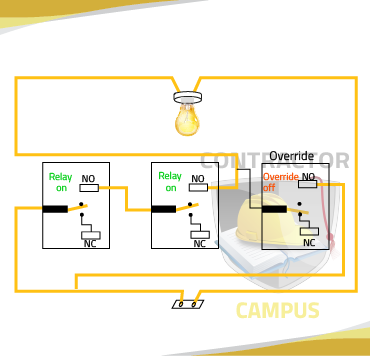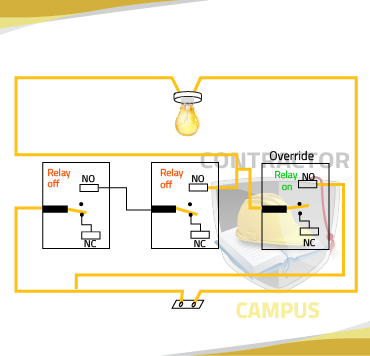Relays on the Electrical Contractor's Exam
A relay is a switch, but unlike traditional switches which close or open circuits mechanically (you push them), relays close or open circuits electronically or electromechanically.
A relay closes/opens a circuit by closing/opening contacts on another. Recall that a closed circuit is one thought which current can flow. An open circuit is one trough which current cannot flow.
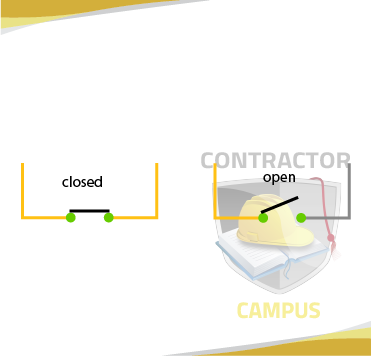
Relays come in two types, electromechanical relays, and solid-state relays. In electromechanical relays, physical parts have to more in order to open/close; generally speaking, parts have to relay gets energized, generates a magnetic "pull" to open/close the circuit. In solid-state relays, there are no parts that physically more, everything happens (opening/closing) electrically.
Relay questions on electrical contractor exams require you to understand clearly how relays work and to be able to follow the flow of current through a circuit based on the expected behavior of the relay and how it imports the rest of the circuit.
Electromechanical Relays - Components and Behavior
Electromechanical relays have [1] an arm that more, [2] a coil, [3] contacts. Contacts can be common, NO (normally open), or NC (normally closed) notice on the diagrams below that by default the arm is set to force the common contact to touch the NC contact; this means that by default the relay is off. But, when the coil is energized, the magnetic force it generates pushes away the arm, causing the common contact to touch the NO contact, turning on the relay. The relay will be on for as long as the coil is energized
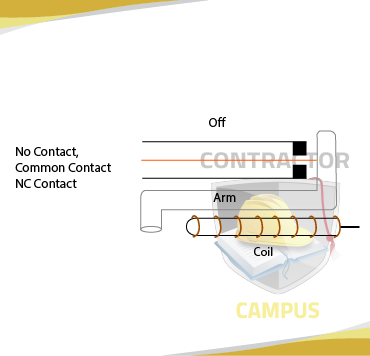
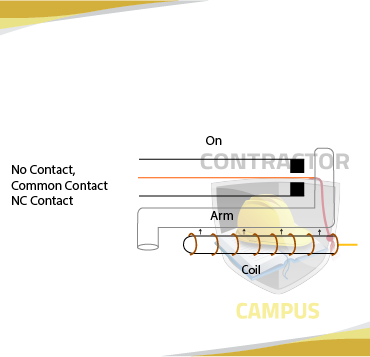
How relays impact the flow of current on a circuit (Relay Logic)
Now that we know the basic components of a relay, let's learn have to "predict" the flow of current within circuits based on the state of one or more relays.
Look at the two diagrams below and notice that in its off position, the circuit cannot be complete and therefore the applicant (lightbulb) connected to it is off as well. When the relay is ON, the common contact touches the Normally Open (NO) contact and allows for the circuit to be completed and therefore the appliance is turned on.
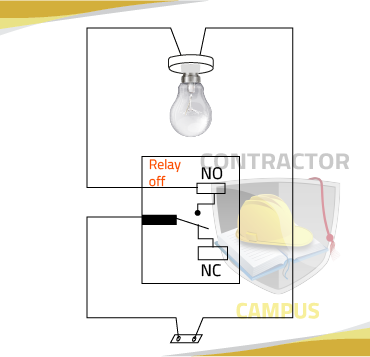
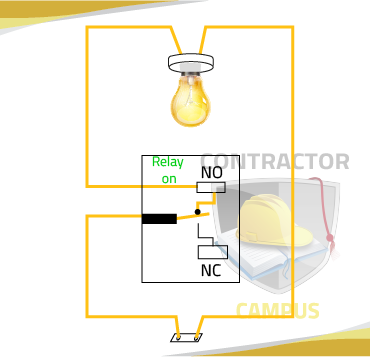
Let's look at the two diagrams below and notice that the way the circuit is wired, current flows throughout the entire circuit and turned on our applicant while the relay is in the off position. If the relay gets turned on our appliance while the relay is in the off position. If the relay gets turned on, it moves the common contact to touch the normally on (NO) contact and interrupt the flowing current, forcing our appliance to be turned off.
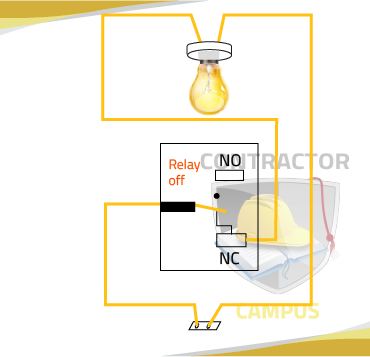
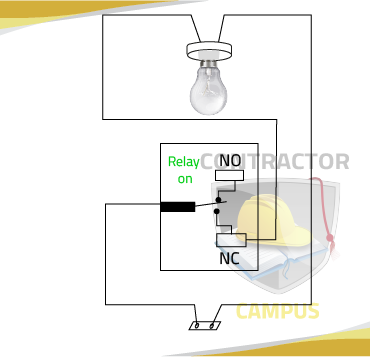
So for we have only dealt unit one relay at a time, but what happens if we have two relays and they both have to be on or off in order for our appliance to be on? Let's explore these cases.
In the example below both relays must be ON for the lightbulb to be on.
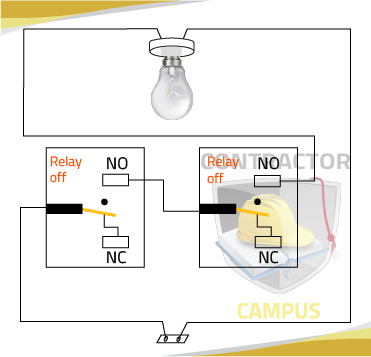
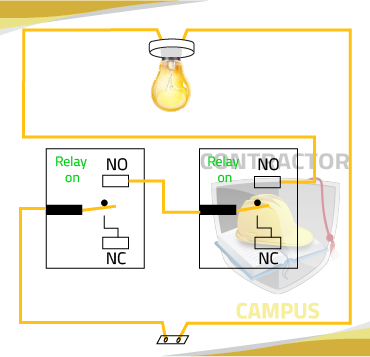
In the example below both relays must be OFF for the lightbulb to be on. If either or both relays are turned on, the light turns off.
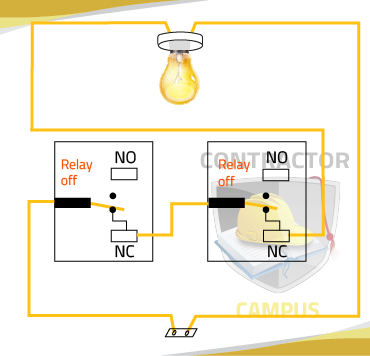
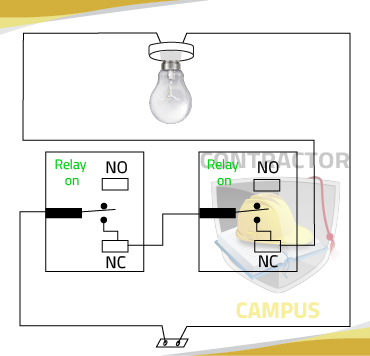
Let's now explore our example where there are three relays. Two of them have to be on in order for the lightbulb to be or, and the third relay series or an override. If the override relay gets turned on it will turn on the lightbulb regardless of the other relay's state.
